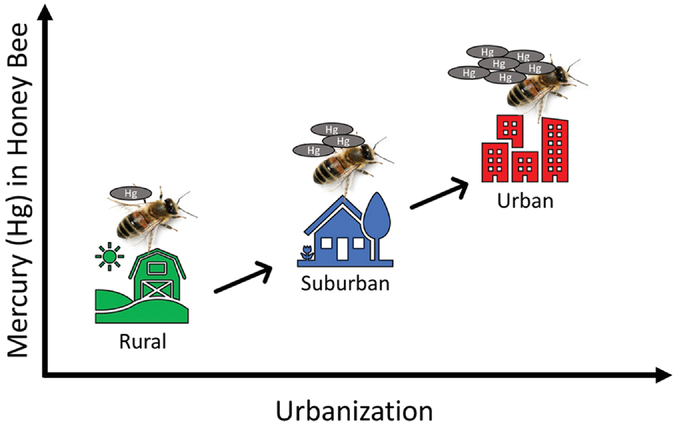Research Update: Mercury Contamination

Back in November 2021, we told you about research coming out of Queen’s University and the Royal Military College of Canada on mercury contamination in edible plants and fungi important to residents of Iqaluit, Nunavut, Canada. Even in the remote Arctic, the team detected mercury in many of its samples, and an astonishingly high amount in one particular fungus, the Arctic puffball. Recently a team based at the University of North Carolina at Greensboro looked at mercury contamination through a different organism: honey bees. In a study published in Agricultural & Environmental Letters (https://doi.org/10.1002/ael2.20083), the researchers reported on their testing of bees across the United States for both total mercury (THg) and methylmercury (MeHg).
The researchers chose honey bees in part because of their importance as pollinators: Understanding their exposure to heavy metals will shed light on threats faced by other pollinators as well. Also, the winged insects function as tiny airborne monitors of chemical pollutants because they fly extensively to forage for resources and encounter chemicals of all kinds in their travels. As they collect pollen, they unwittingly collect other compounds. For this reason, honey bees have been used to study heavy metals, pesticides, and radionuclides in the environment. But the study provides the first dataset of honey bee Hg from different regions in the U.S. and the first time honey bees have been used to study MeHg.
With the help of citizen scientists, the researchers collected samples of honey bees from 10 locations across the country, some rural, some suburban, and some urban. When they examined the bees, they confirmed their hypothesis: The highest THg levels were found in urban bees, followed by suburban bees, and then rural bees. Given higher levels of mercury found in general in urban areas
due to industry, power generation, waste incineration, and other activities, this finding was not surprising.
Overall, the THg levels detected in the bees were low compared with other studies, and MeHg levels were below detection limits. One possible reason, suggest the authors, is that bees may not accumulate high levels of contaminants in their short lifespans. Given the limits of the study, the critical role pollinators play in the ecosystem, and their potential to serve as biomonitors for pollutants, more studies on honey bees and contaminants should be done, according to the authors.
DIG DEEPER
To read the CSA News magazine article on mercury contamination in the Arctic, check out, “Arctic Puffballs Tell the Story of Global Mercury Transport”: https://doi.org/10.1002/csan.20611 or by scanning the QR code.
Read the recent Agricultural & Environmental Letters study on honey bees, “Mercury Accumulation in Honey Bees Trends Upward With Urbanization in the USA”: https://doi.org/10.1002/ael2.20083 or by scanning the QR code.

Text © . The authors. CC BY-NC-ND 4.0. Except where otherwise noted, images are subject to copyright. Any reuse without express permission from the copyright owner is prohibited.













